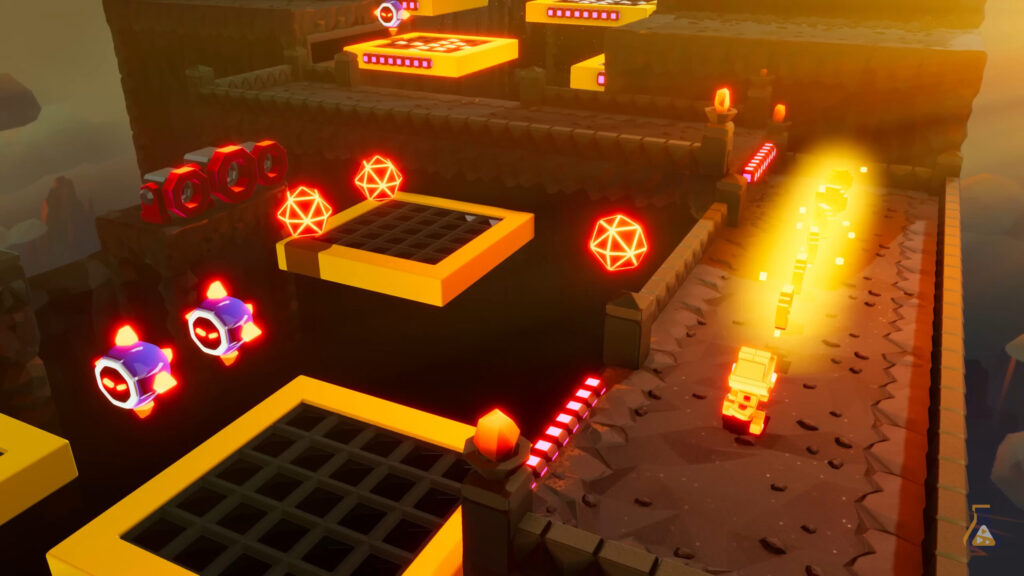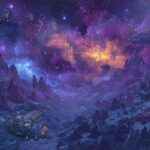Like many at the time, I was immensely hyped for the launch of Yooka-Laylee. A spiritual successor to Banjo-Kazooie, created by those who previously worked on the series, was a no-brainer, especially given the distinct lack of any present-day sequels (and that was back in 2017). However, as much as imitation is considered the highest form of flattery, Yooka-Laylee didn’t really do much to rise above its inspiration and actually had its fair share of technical problems.
After over nine years and an entirely separate (and much better) game in The Impossible Lair, Playtonic has returned to where it all began with Yooka-Replaylee. Revamped visuals and animations, new quality of life features, and an overhaul to Rextro’s Arcade – it offers no small amount of changes and improvements to the original game’s formula. Try as it might, however, it can’t completely rise above average – and at times, even dull – level design and platforming challenges that oscillate between easy and insultingly so, resulting in a solid but ultimately unremarkable 3D platformer.
The story, such as it is, remains the same. Yooka and Laylee crash land on an island and discover the One Book, a tome that can make anything written within a reality. Captured by the villainous Capital B, the duo help set it free… only to witness it captured once more, scattering its Pagies to the winds to keep its power from falling in the wrong hands. It’s thus up to Yooka and Laylee to recover those Pagies, many residing within other tomes that house their own worlds, even if they’re playing into the hands of Capital B and his researcher, Dr Quack.
“Regardless, the platforming is the main appeal, and it’s here that Yooka-Replaylee’s improvements are more obvious. Thanks to some deus ex machina with the One Book, Yooka and Laylee have access to their full moveset from nearly the beginning.”
It’s a tale as straightforward as any other, even with the late-game twist. The real appeal is supposed to be the writing and charming characters, like Clara Lost, an explorer who’s also a skeleton. Cue jokes about the lack of a heart (or just her survival instincts in general). Or Dr Puzz, a former scientist who worked for Dr Quack and whose experiments have resulted in some marine-like changes. Cue the jokes about seas, tentacles, and so on. Some of Laylee’s biting commentary can be fun, but at times, the sheer amount of attempted “gotchas,” puns and snarks feels way too overdone to really end up paying much mind. Don’t even get me started on Galleon Galaxy and whatever the heck is going on with the Blamphibians in Galleon Galaxy.
Regardless, the platforming is the main appeal, and it’s here that Yooka-Replaylee’s improvements are more obvious. Thanks to some deus ex machina with the One Book, Yooka and Laylee have access to their full moveset from nearly the beginning. Instead of waiting until Glitterglaze Glacier, the second world, to unlock Lizard Leap and gain some extra jumping height, its availability from the outset allows for much more freedom of exploration (especially when comboed with Glide). It’s incredibly liberating, as is having Slurp Shot available when tackling sections that require hosing down multiple enemies with projectiles or destroying objects, rather than collecting Quills, returning to Trowzer to purchase the move, and so on. That they flow fairly seamlessly into each other and control so well is also great. Say what you will, but Playtonic nailed the feel of movement.
That said, the sheer range of available moves feels lackluster. Yes, there are a few standouts, such as the Sonar Shot, which reveals hidden platforms; Slurp State for inheriting an object’s properties; and Camo Cloak for going invisible. It’s just that their applications feel way too simplistic, which boils down mostly to the nature of challenges and combat as a whole. Most enemies are downright pathetic, crumpling to a few Tail Twirls or a simple bop on the head, so much so that I often just rolled past them when possible because it wasn’t worth the effort. The few exceptions – the invulnerable bot that releases energy waves or the spiky enemies that must be pushed back with Sonar Shot instead of melee’d – do very little to mix things up.
Tonics return, and there are many more to earn, though I found many of them, from increased energy to more hearts, to be unnecessary. The sheer number of cosmetic options and filters is pretty nice, as are the upgrades from Trowzer. Again, unnecessary, especially with the overall difficulty of the experience, but it’s better than nothing, even if it significantly reduces the urge to collect Quills.
“While not inherently a terrible thing, it doesn’t help the levels to really stand out or feel memorable in terms of gameplay, much less cohesiveness. The transformations also remain as underwhelming as ever.”
In terms of other new additions, the new map and challenge tracker make it easier to mop up any missing Pagies. Some challenges have also been improved – the “quest” involving Shovel Knight focuses more on seesaw-like platforms and freezing them in place compared to the original’s more boring approach of shooting switches. Rextro’s Arcade now has you controlling Rextro in separate puzzle platforming levels, where utilizing his chomp is the key to progression, especially since he can’t jump.
However, many of the challenges aren’t exactly all that, well, challenging, and the overall design of each world still leaves something to be desired. Some feel rudimentary, simply thrown in for the sake of doing; certain sections feel like they could be expanded on much more. Then you have sections like the one in Moodymaze Marsh that involve moving past some spiky obstacles underwater to get to the Pagie on time, which feel poorly designed, possessing no pretence of challenge whatsoever.
Pagies can just as easily be obtained from minecart rides as from a half-buried treasure chest in the sand. While not inherently a terrible thing, it doesn’t help the levels to really stand out or feel memorable in terms of gameplay, much less cohesiveness. The transformations also remain as underwhelming as ever.
Of course, it’s not all terrible. Some may appreciate the sheer variety of “things” on offer, from passing through gates with the Sonar Shield to beam up and destroy a point of interest (which sounds way more exciting than it actually is) to navigating a maze from a top-down perspective, avoiding hazardous blocks as they shift around. Each of them looks pretty great in terms of art design and fidelity, and the revamped visuals, especially with the lighting and reflections, are nice. It’s actually amazing to see the difference between locations like the Waterworks, which feel more appropriately dingy compared to the original.
“However, it’s still Yooka-Laylee at its core, which means dealing with uninspired platforming sequences, so-so bosses, unfunny dialogue and worlds that feel more cobbled together than anything else.”
Performance is also quite solid throughout with very rare frame drops, and the soundtrack is even better than ever, thanks to Grant Kirkhope and David Wise. And if that wasn’t enough, the camera is much more cooperative this time around, though there are still plenty of instances where it feels too uncomfortably close with no means of rotating or moving it.
Yooka-Replaylee, as promised, is the “definitive” version of Yooka-Laylee in almost every way. The presentation is a significant step up, and many of the more annoying aspects of the original are either downplayed or revamped. However, it’s still Yooka-Laylee at its core, which means dealing with uninspired platforming sequences, so-so bosses, unfunny dialogue and worlds that feel more cobbled together than anything else. That may appeal to a strong contingent who loved the original despite its flaws, and might make for a stronger sell to those previously wary, even if it’s far from an amazing platformer.
This game was reviewed on PlayStation 5.






Great to see a review of Yooka-Replaylee! It’s always interesting to hear different perspectives on games that hold a special place in our hearts. Looking forward to more insights!
the game. I agree, it’s fascinating how nostalgia can shape our expectations. It’s worth noting how the design choices reflect the evolution of platformers since the original era, which might resonate differently with new players compared to those who grew up with them.
it’s interesting how developers often try to balance innovation with the familiar elements that fans love. This can lead to mixed reactions, as some players embrace the nostalgia while others seek new experiences. It’s a tricky line to walk!
You’re absolutely right! It’s a tough line to walk—while fans appreciate nostalgia, they also crave fresh experiences. Yooka-Laylee’s attempt to blend old-school charm with new twists could be seen as both a tribute and a challenge to evolve.